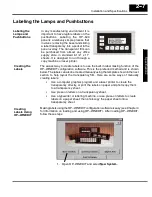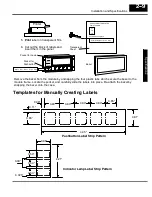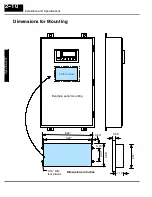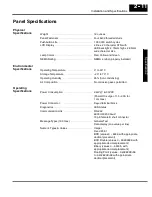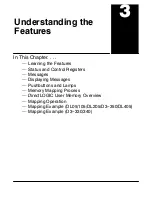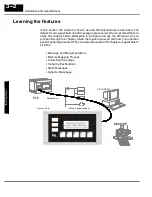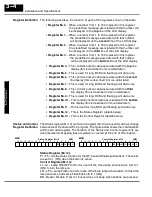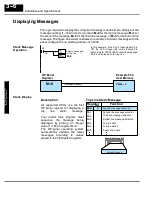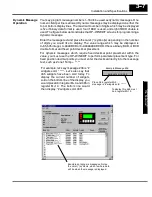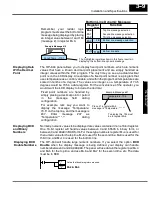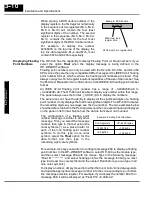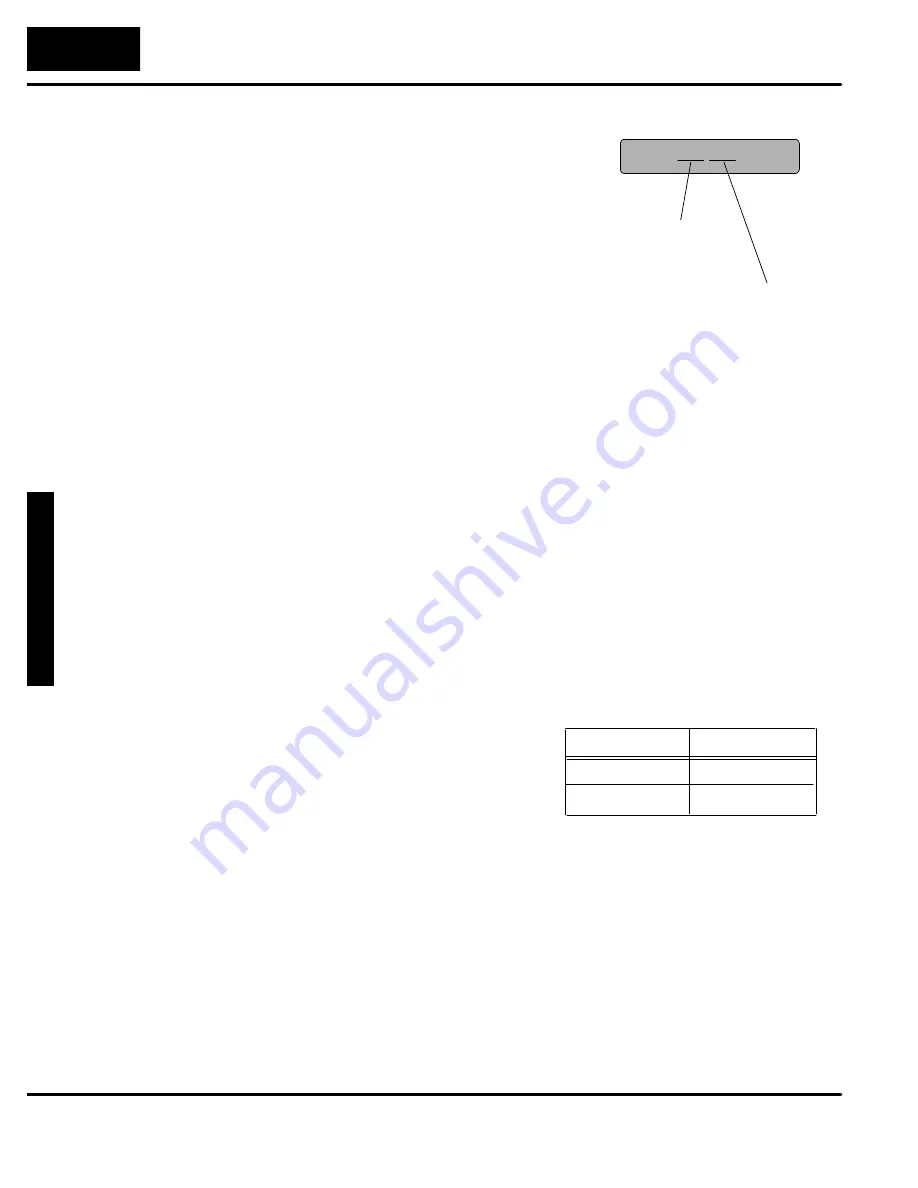
U
nd
er
st
an
di
ng
U
nd
er
st
an
di
ng
th
e
F
ea
tu
re
s
th
e
F
ea
tu
re
s
3--10
Installation and Specifications
When placing a BCD double number in the
display registers, the first register numerically
in the sequence of two registers (M+4, M+6,
M+8 or M+10) will contain the
four least
significant digits
of the number. The second
register in the sequence (M+5, M+7, M+9 or
M+11) contains the data for the
four most
significant digits
of the BCD double number.
For example, to display the number
92345678 on the top line of the display, the
top line data registers, M+4 and M+5, must
contain 5678 and 9234 respectively.
Example: BCD Double
92345678
9234 must be in
register M+5
5678 must be in register M+4.
The OP--640 has the capability to display Floating Point (or Real) numbers if you
select the option
Float
when the display message is being defined in the
OP--WINEDIT software.
Floating point numbers can only be used with the D2--250, D3--350, and D4--450
CPUs since they are the only compatible CPUs that support the IEEE 32-bit floating
point number format, which is where the floating point numbers are stored. They
always occupy two 16-bit register locations regardless of the size of the number. See
the PLC User Manual for more information on the IEEE 32-bit floating point number
format.
An IEEE 32-bit floating point number has a range of --3.38 to
+3.38. The OP--640 will be able to display any number within that range.
The panel always uses the format
¦
X.XXE
¦
XX to display the numbers.
The panel does not have the ability to display all the significant digits of a floating
point number, it only displays the first three significant digits. The OP--640 truncates
the remaining digits so you always see the true number. The two examples below
show the data contained in the PLC registers and the corresponding value displayed
on the panel in its format. Notice how the data is truncated, not rounded.
The configuration of a floating point
number message is similar to any other
message. First, you select the message
number, then type in the text using nine
caret symbols (^) as a place holder for
each of the nine floating point number
symbols. To do this, type in one caret
symbol, select the
Float
option for the
data format, and then type in the
remaining eight caret symbols.
Example: Floating Point Numbers
12301.789
PLC Registers
OP--640 Display
123.96783
+1.23E+04
+1.23E+02
For example, let’s say you wanted to configure message #58 to display a floating
point number. In the OP--WINEDIT software, select OP--640 as the module type,
and then select message #58 with the mouse. Type in the following message:
“Float Pt ^^^^^^^^^” and select floating point as the message format (you must
type in at least one caret symbol and then select Float before you can type in all
nine caret symbols).
To display a number, simply move it into either the top or bottom line data registers
and load the appropriate message number into the corresponding top or bottom
line message selection register. For example, if you display the number 632.15 in
message #58, it will be displayed as “Float Pt # +6.32E+02”.
Displaying Floating
Point Numbers

